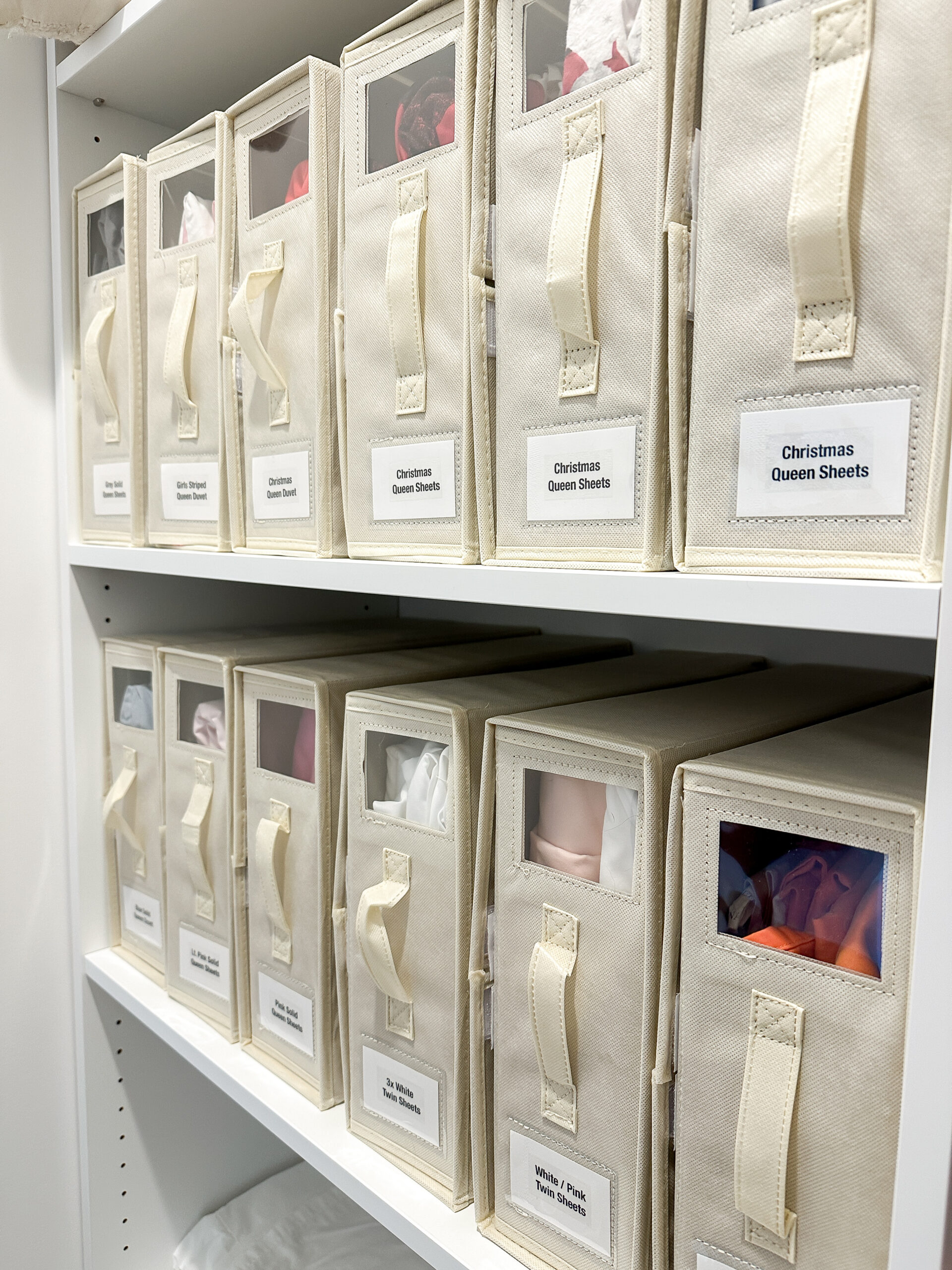
Declutter Like a Pro: 7 Areas Often Overlooked

Introduction: Where Clutter Hides
As a busy mom, you’re constantly managing your home, juggling responsibilities, and trying to keep everything in order. But even the most organized moms can overlook hidden clutter in unexpected places. While you might keep up with daily tidying, there are sneaky spots where clutter tends to accumulate, making your home feel more chaotic than it should.
Today, we’re highlighting seven commonly overlooked areas where clutter lurks and sharing expert tips on how to tackle them efficiently.
7 Overlooked Areas and How to Tackle Them
1. Closets
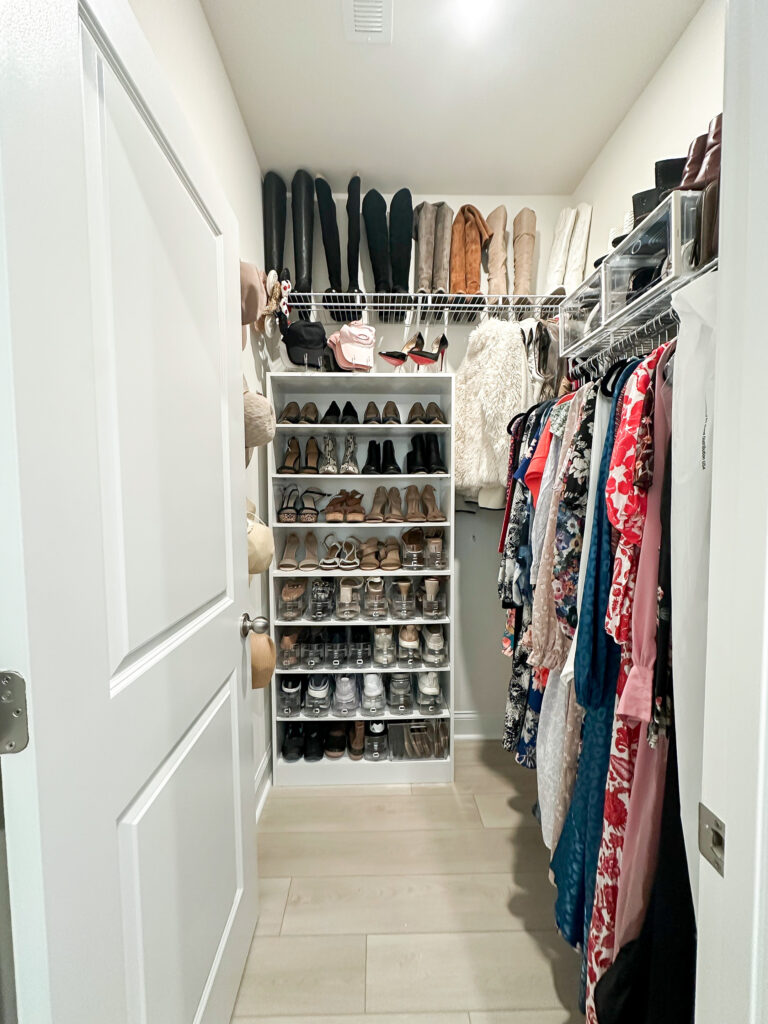
Closets can easily become dumping grounds for out-of-season clothes, random accessories, and forgotten items. If your closet isn’t organized you can easily misplace items and find them months later only to say “hey, I’ve been looking for that”
- How to Tackle It:
Do a seasonal purge if you haven’t worn it in a year, donate it. But question is how do you know if you’ve actually worn it? Try this trick next time you are cleaning out your closet.
Tip: Hang your clothes like normal on a the hanger. Place the hanger backwards on the rod. Next time you wear it, hang it back up the correct way. Next year or in about 6-9 months if you still have hangers that are backwards, those are the items you want to start looking at to get rid of.
- Use matching hangers to create a streamlined look. It doesn’t matter if they are brown, black, wood or metal; they all just need to be the same. You can have the prettiest closet, with the prettiest clothes but if your hangers don’t match; it instantly makes your closet look “not put together”.
- Install shelf dividers to prevent piles from toppling over. Shelves can be long and if you have a lot of sweaters, pants or t-shirts folded on your shelf; taking one from the bottom could cause them all to tumble. Shelf dividers are great to help keep those items contained.
2. Junk Drawers
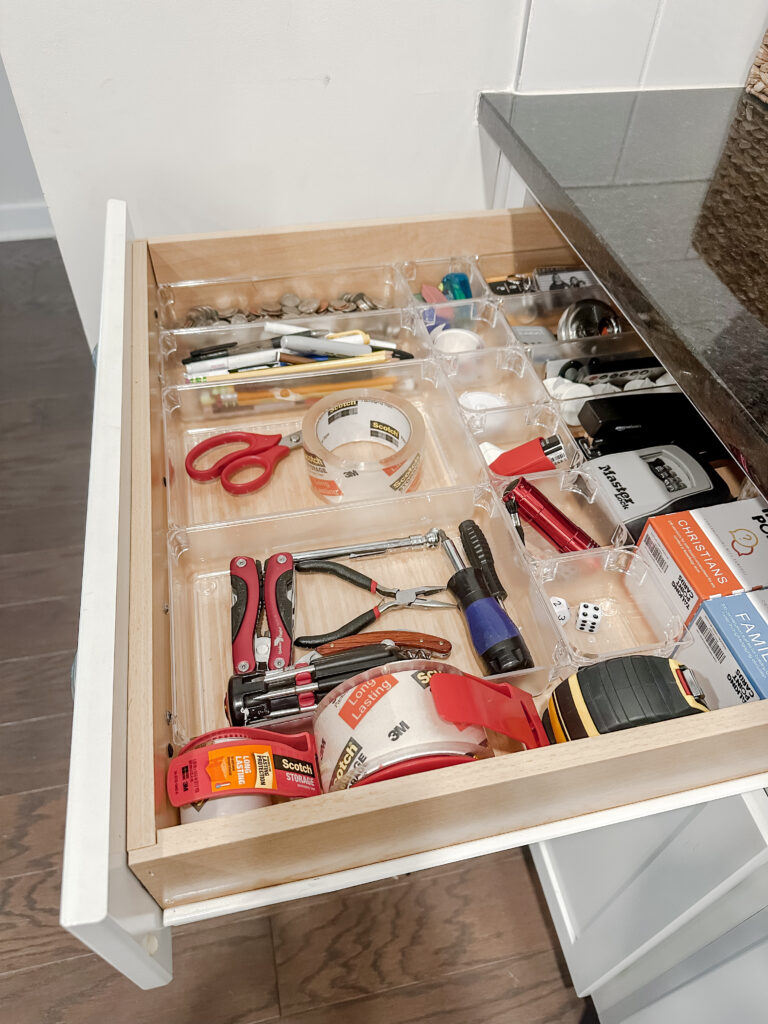
The infamous junk drawer is where everything random lands. Batteries, receipts, pens, and mystery keys. The kicker is; you actually need these items from time to time. Having a “junk” or miscellaneous drawer is a necessity. Surprisingly, they aren’t hard to keep organized once you have the system in place.
How to Tackle It:
- Empty the drawer, clean it out and sort items by category. Some cateogries would be batteries, scissors, pens, change etc.
- Use small dividers or containers to keep items neatly separated. This gives every item a home. Even that small tiny battery or that little sewing kit that you may never even need.
- Use a Label maker and label sections to maintain organization long-term. Labeling allows everyone in the house to know exactly where things to go.
3. Garage
The garage often becomes a storage space for everything from old toys to seasonal decorations, tools and gardening.
How to Tackle It:
- Create zones (kids sports gear, tools, holiday decorations, gardening, golf etc.) to keep similar items together.
- Install wall slats, hooks and shelving to free up floor space. Wall slats are by far my favorite garage organizing tool. You install it once and then can adjust it as the years go on. It allows you to use all the vertical space you need and you can easily rearrange things when you buy that new cooler.
- Donate or discard broken or unused items. We often will put broken or unused items in the our garage because we really don’t know what to do with it. Don’t do this, if you don’t use it; get rid of it. If you aren’t sure if you’ll use it; put it aside for another 6 months and decide then. If you don’t use it; more than likely you probably won’t ever use it.
4. Pantry
Expired food, half-empty snack bags, and cluttered shelves make it hard to find what you need. With so many people going in
How to Tackle It:
- Take everything out, it will get way worse before it gets better. Wipe down your shelves and check expiration dates. Discard old items.
- Use bins or baskets to group similar foods (e.g., snacks, cereals, breads, canned goods). You can create zones as well; such as a baking zone, school lunch zone, smoothie / supplement zone etc.)
- Label everything to maintain order and make meal prep easier.
Tip: Meal Prep basket or drawer. Have you went to cook dinner, only to find that the ingredients you bought for the meal were eaten. Create a space in a basket or drawer and label it Meal Prep. Stick all your ingredients for dinner in this basket and tell the rest of your family … “do not touch”.
5. Under the Beds
Out of sight, out of mind—but that doesn’t mean clutter isn’t piling up!
How to Tackle It:
- Pull everything out and decide what stays and what goes.
- Use under-bed storage bins for out-of-season clothes or extra linens.
- Keep it clean with routine checks every few months.
6. Linen Closet
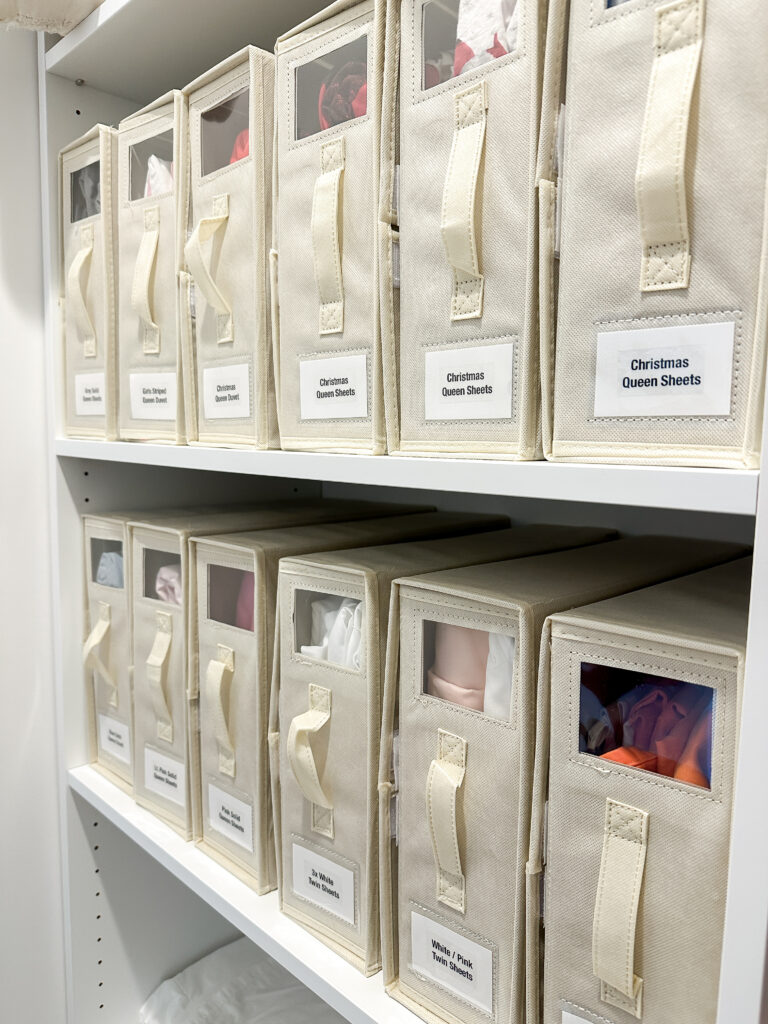
Towels, sheets, and random toiletries can make this space overwhelming.
How to Tackle It:
- Fold linens uniformly and store them in labeled bins or use a sheet organizer.
Tip: If you really hate folding sheets, don’t. Find a basket or bins and toss those suckers in there. Remember, there isn’t a wrong or right way to organize. Do you know where it’s at? Is the clutter hidden? Does it make your life easier? Than do it that way. - Use door organizers for toiletries and small items.
- Rotate older linens to the front to ensure they get used first.
7. Kids’ Artwork & School Papers
Papers pile up quickly, and it’s hard to know what to keep and what to toss. Nor do you want to get caught in the act of throwing away your child’s masterpiece!
How to Tackle It:
- Keep only sentimental or special pieces and store them in a labeled memory box.
- Take photos of artwork and store them digitally.
- Set up a filing system for important school papers.
Why You Need a Pro
While decluttering and organizing on your own is totally possible, there’s a reason so many families turn to professional organizers—it’s faster, easier, and the results last longer.
Hiring a pro isn’t just about making things look pretty (though that’s a perk!). It’s about creating a home that supports your life and reduces daily stress. Here’s what a professional organizer brings to the table:
1. Systems That Work for Your Family
A pro creates customized systems based on how your family lives. From entryway drop zones to kid-friendly pantry setups, everything is designed with your day-to-day in mind.
2. Serious Time Savings
What might take you weeks (or months) to finish can often be tackled in a day or two with an expert leading the way.
3. Sustainable Organization
The goal isn’t just a tidy drawer—it’s a system that stays tidy. A pro builds strategies that help you maintain order long after the organizing session is done.
4. Accountability & Support
Decluttering can be overwhelming. A professional offers guidance, encouragement, and a non-judgmental space to make decisions with confidence.
5. Beautiful, Functional Spaces
Professional organizers combine form and function—think smart layouts, labeled bins, and closets that make you feel instantly at ease.
Ready to Declutter Like a Pro?
If you’re feeling overwhelmed, you don’t have to tackle this alone. Book a consultation today and let’s transform your space together!

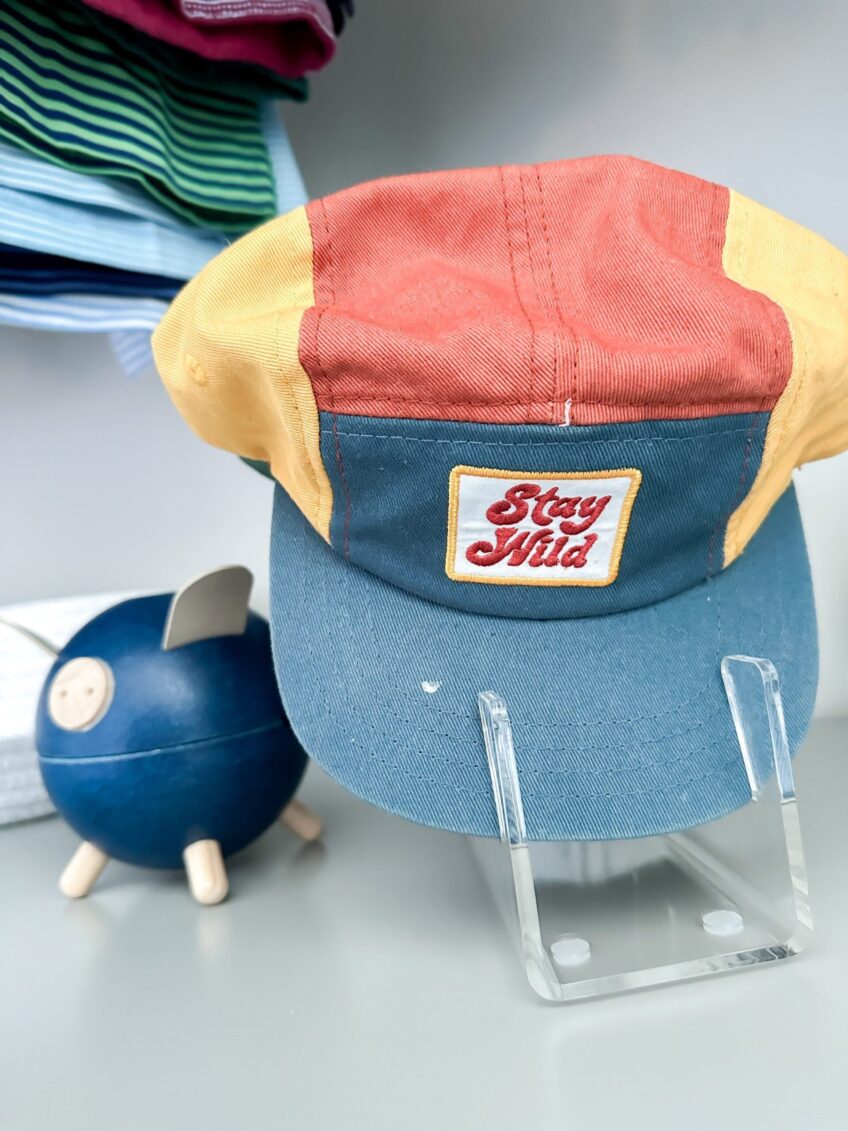


Leave a Reply